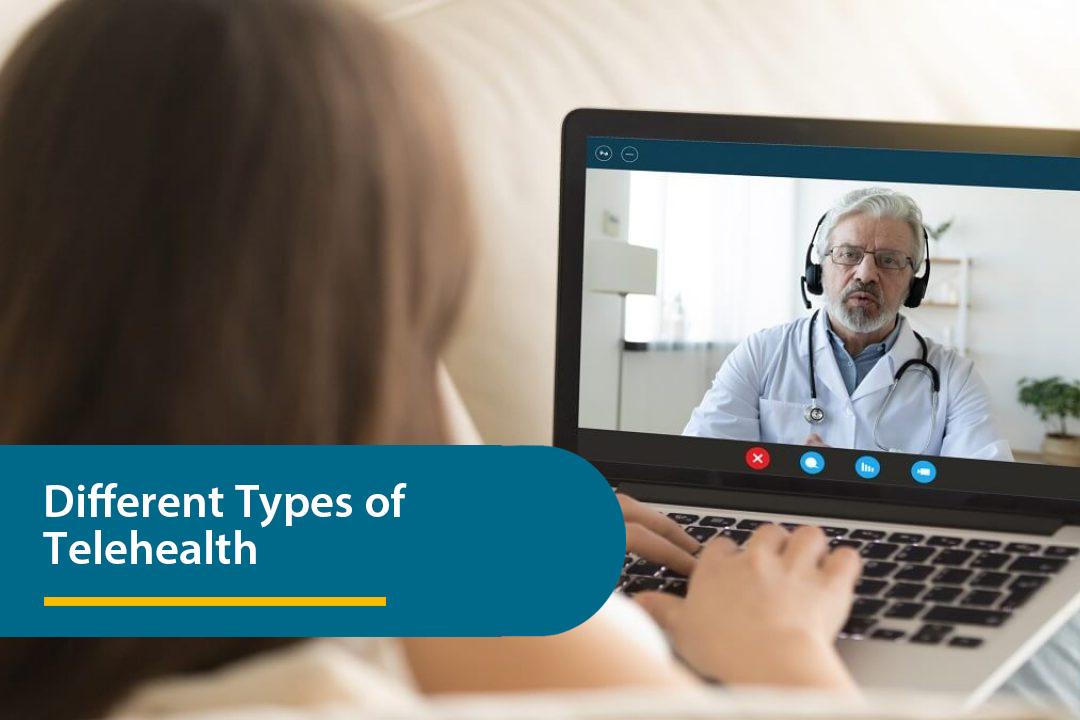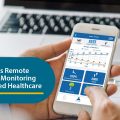The growth of Tele Healthcare in the last couple of years has been truly phenomenal. There is no better proof than during the very challenging pandemic period when the global medical system collapsed and Telehealth Services rose to a new level by making its presence felt.
These days, Telehealth in India is continuing to win the trust of everyone. Thanks to the ever-growing number of Telehealth companies in India.
However, it is not just the name Tele Healthcare that has become a household name. The different types of Telehealth Services have independently won the hearts of many due to the advantages it presents to patients, especially in the rural sector.
What are the best Telehealth Platforms? Apollo Telehealth, the leader in Telemedicine in India, takes you up and close with this exciting technology.
Different Types of Telehealth Services:
Though technology has thrown in a wide range of options in the form of Different types of Telehealth systems, there are four widely observed and used categories of telehealth that exist in today’s medical industry. The benefits of each category are different and can be of impeccable support to you and your patients in different ways depending on your needs.
- Live Video-Conferencing:
As the name sounds, Live Video-Conferencing is a two-way video conference between you and your doctor. Most of the healthcare experts from independently practicing physicians to those visiting Multispeciality hospitals can make use of this technology.
Live video-conferencing brings in huge advantage to the patients by not only eliminating the travel time and stress for both the patient and doctor, but also brings in the much-needed expert healthcare services to those areas who are without any access to it, especially rural sector.
- Asynchronous Video (AKA Store-and-Forward):
Telehealth In India is the next generation Healthcare services. This is again proved by another outstanding type of Telehealth service in Asynchronous video. It facilitates the electronic delivery of a patient’s documented health history outside of real-time, used by a healthcare expert.
For e.g., a physician in a rural sector would like to discuss a patient case with an expert sitting in an urban area. The Asynchronous video acts as a safe and secure channel by transmitting data quickly and helping doctors take quick decisions.
- Remote Patient Monitoring (RPM):
What is Remote Patient Monitoring? This technology has gathered immense pace and acceptance of people mainly due to the advantages it provides. Making use of portable, wearable devices, RPM has brought in a new dimension to healthcare, especially when it involves taking care of patients outside a traditional hospital environment for e.g. the patient’s residence itself or remote area.
Remote Healthcare facilitates chronic disease management for patients by improving accessibility and decreasing treatment costs. One of the significant advantages which RPM brings is that patients’ vital parameters like blood sugar levels, blood glucose levels, blood pressure readings and heartbeat readings can be monitored through wearable and remote-control supporting devices that allow experts to take quick decisions on treatments.
- Mobile Health (mHealth):
Mobile health uses smart devices like smartphones, tablets, etc. in conjunction with health-based software apps developed for these devices, that supports continued healthcare. Many health-based apps exist now and can monitor everything from a diabetic patient’s blood sugar level to one’s daily water intake.
The mHealth technology is seen as a game-changer in healthcare especially when it comes to providing superior quality healthcare services and health-related information for hard-to-reach populations.
Think of something like this, which was truly beyond anybody’s imagination a couple of decades ago, using niche technology-driven hardware and medical software!
- Education and awareness to patients in the comfort of their residence
- Diagnostic and treatment support without patients having to move out of home
- Communication and training for healthcare workers
- Disease and epidemic outbreak tracking
- Remote monitoring
- Remote data collection
Yes, all this has been made possible by mHealth and this is just the beginning!
Wrapping Up:There is no stopping Telemedicine in India. As the technology wins more and more hearts, a greater number of options will arise in the form of types of Telehealth. To know more, feel free to connect with Apollo Telehealth, the front-runner in offering Telemedicine services in India.




